Breaking Free From the Hamster Wheel: The Power of Double-Loop Learning

“The illiterate of the twenty-first century will not be those who cannot read and write, but those who cannot learn, unlearn, and relearn.” — Alvin Toffler The Problem with Our Mental Models
Have you ever felt like your organization is running faster and faster just to stay in the same place? Like Alice in Wonderland, many leaders find themselves stuck in what I call the "organizational hamster wheel" - expending enormous energy without making real progress. The root cause often lies in our mental models - the stories and assumptions we use to make sense of the world.
The Limits of Single-Loop Learning
Most organizations default to what Chris Argyris calls single-loop learning - we observe an outcome we don't like, make an adjustment based on our existing mental models, and hope for better results. Consider these cautionary examples:
Wells Fargo tried to improve performance by incentivizing employees to open more accounts. This led to widespread fraud as employees opened accounts without customer knowledge.
Humanitarian organizations attempted to combat malnutrition in Peru by providing food directly to families. They didn't anticipate that families would give the food primarily to working males, leaving children still malnourished.
A claims processing department faced high workload and responded by aggressive hiring. This actually worsened their problems as training demands increased stress on experienced staff, leading to more turnover.
In each case, organizations applied solutions that made intuitive sense based on their existing mental models. But those models were fatally flawed.
The Anatomy of Problem-Solving
To understand why organizations fall into these traps, let's examine the three distinct phases of problem-solving.
Phase 1: Sense-making
We begin by identifying a gap between our current reality and our vision of an ideal future state. Think of it as the difference between "what is" and "what could be." This gap forms the frame of our problem. We then access our mental models - our theories about how the world works - to make sense of this gap and its causes.

Phase 2: Solving
Using these mental models as our guide, we develop solutions. Like a receipt printing from a checkout machine, our mental models process the problem and output what we believe to be the best plan or strategy. While this might seem oversimplified, it evocatively represents how we move from understanding to strategy and decisions.
Phase 3: Implementing and Learning
Finally, we put our solution into action and observe the results. Sometimes everything works as planned. But often, we face unexpected outcomes or find the gap persists. At this critical juncture, we face a choice: do we just adjust oursolution, or do we question our underlying assumptions?
This is where many organizations get stuck. When faced with disappointing results, the natural tendency is to loop back to Phase 2 - tweaking the solution while using the same mental model.
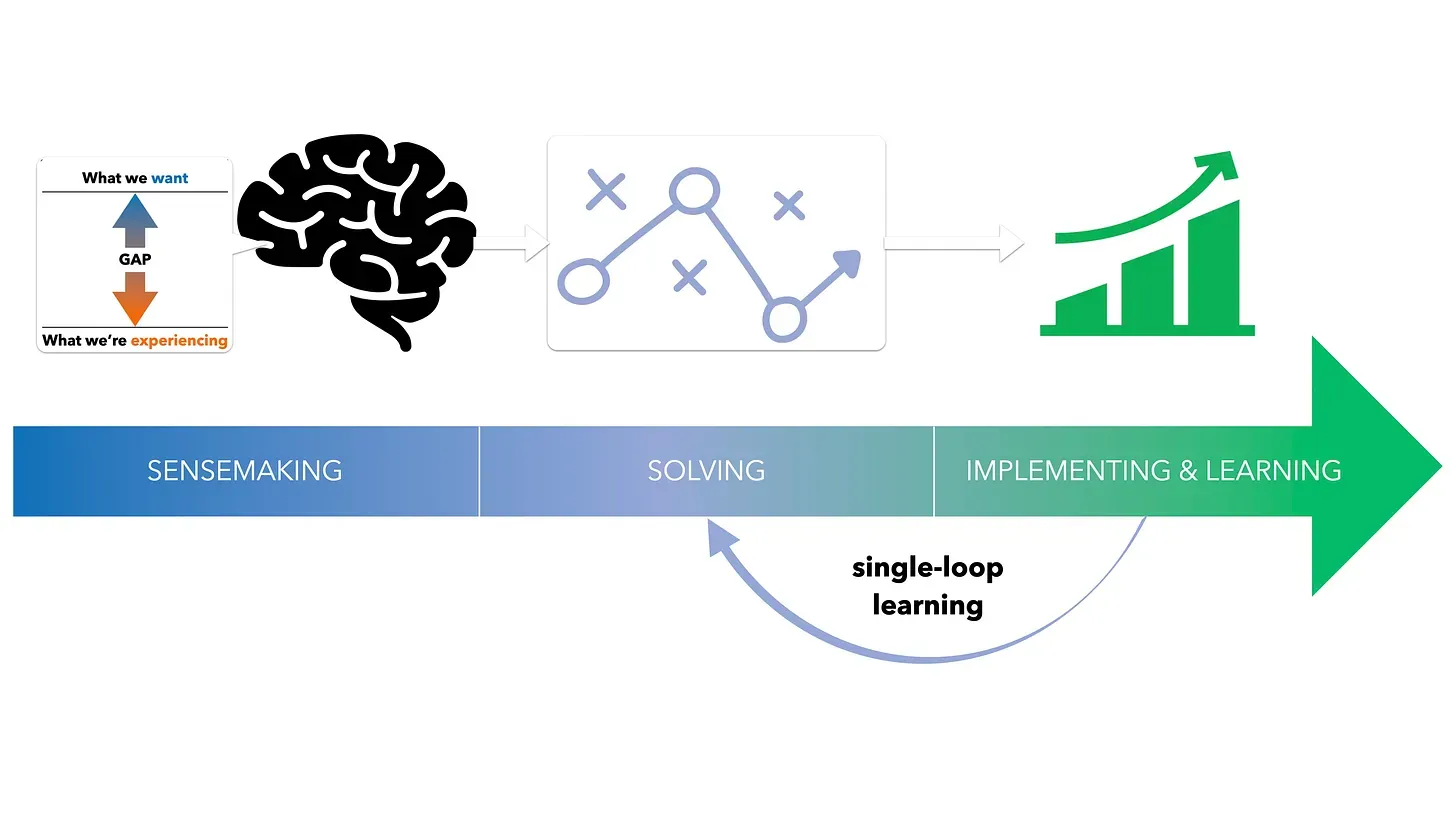
Remember our claims processing department? When their initial hiring push didn't solve the problem, they simply decided to hire even more people, faster. This is classic single-loop learning - adjusting the solution without questioning the underlying assumptions that created the problem in the first place.
Understanding Double-Loop Learning
This is where double-loop learning is required. Instead of just adjusting our actions (the single loop), we examine and revise our fundamental assumptions about the problem (the second loop). We surface, explore, test, and improve our mental models.
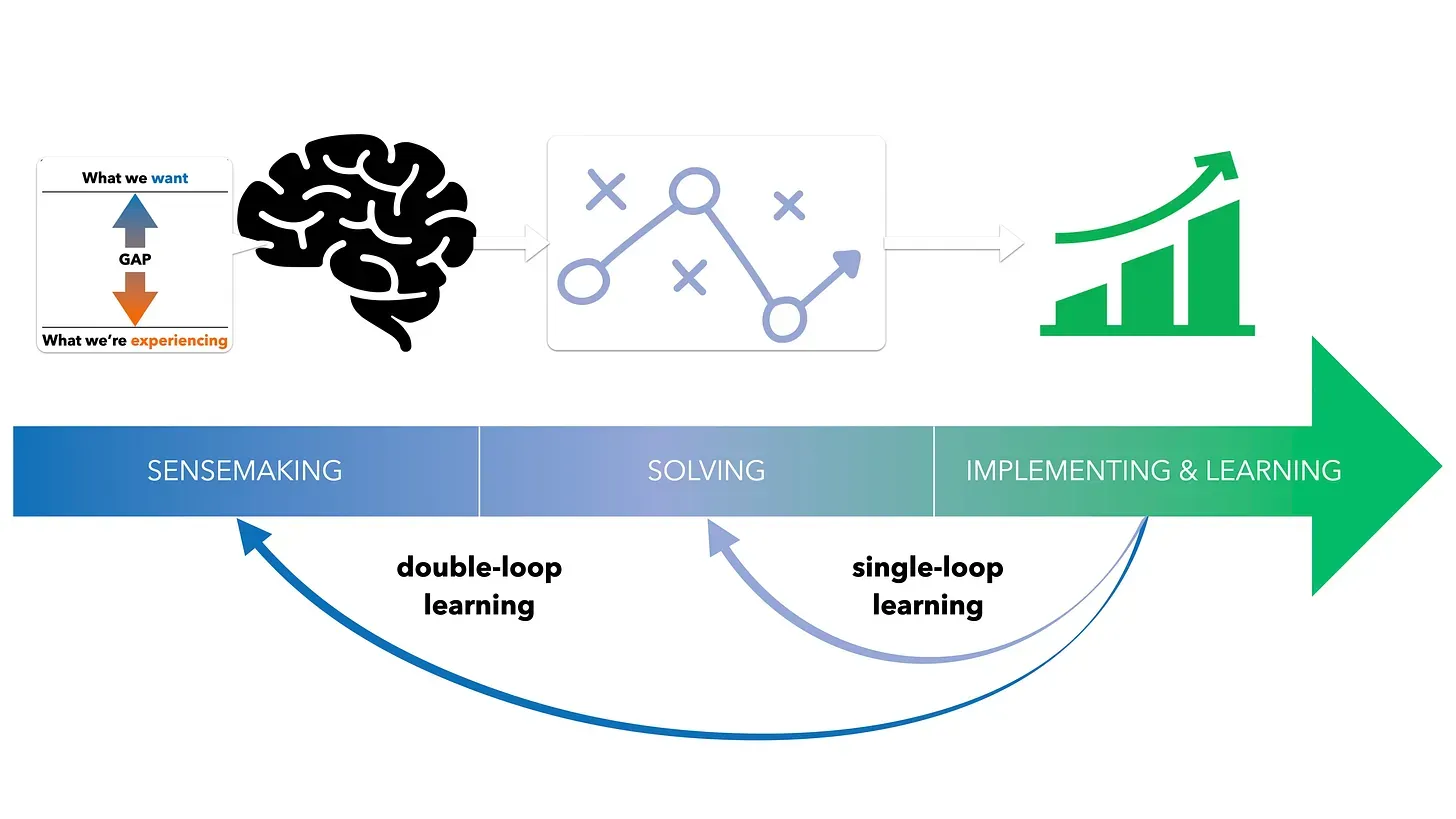
The process works like this:
We identify a performance gap between our aspirations and reality Instead of jumping to solutions, we pause to examine our mental models We use tools like systems mapping to make our assumptions explicit We test and revise those assumptions based on evidence We develop new mental models that better reflect reality Only then do we design solutions based on these improved models
Moneyball: The Power of Double-Loop Learning
One of the clearest examples comes from baseball. Billy Beane and the Oakland A's revolutionized how baseball teams evaluate talent by questioning fundamental assumptions about what makes a valuable player. The conventional mental model focused on batting average and RBIs. By examining and revising these mental models, they discovered that on-base percentage and slugging percentage were better predictors of offensive success.
This wasn't just about trying a different metric - it was about fundamentally reconceptualizing how baseball talent evaluation worked. The results transformed the sport.
Building Better Mental Models Through Systems Thinking
Effective double-loop learning requires what's called "systemic intelligence" or SysQ - the ability to see and understand the driving characteristics of complex systems. This involves:
Making mental models explicit through visualization tools Understanding how different parts of the system interact Identifying high-leverage intervention points Testing assumptions through careful observation Learning continuously during implementation
Billy Beane — and his management staff — double-looped their mental models of what makes great baseball players. The claims department mentioned earlier eventually double-looped and stopped hiring to address staff shortage. And organizations working to address malnutrition in Perú also created a double-looped, collective mental model of why malnutrition persisted…and how to reduce it.
Moving from Theory to Practice
To apply double-loop learning in your organization, team, or coalition:
When facing persistent problems, pause to examine your mental models — step off the hamster wheel!Where possible, use tools like system mapping to make assumptions explicit Apply Conversational Capacity to engage multiple perspectives — challenge your mental models Test revised models with small experiments — use maps or simulation models if possible Create learning loops to enable continuous learning — leading indicators are especially valuable
Remember: the goal isn't just to solve today's problem, but to transform our understanding in ways that help us handle future challenges better. That's how organizations break free from the hamster wheel and achieve sustainable success.
Double-Loop Learning in Action: Two Success Stories
Transforming Huntsville into a Tech Hub
Huntsville, Alabama faced a critical challenge: despite attracting young tech talent for internships and entry-level positions, they couldn't retain them. The city's initial mental model assumed this was primarily a compensation issue. However, through a rigorous ecosystem mapping process, they discovered something surprising: their strategy of importing seasoned STEM professionals was actually undermining their ability to retain young talent.
The mapping process revealed that young professionals weren't leaving primarily because of money - they were leaving because they were bored. This insight led to a fundamental shift in their mental model about what makes a city attractive to tech talent. Instead of just focusing on traditional economic development, they realized they needed to invest in what they called the "soft stuff":
Creating vibrant arts and culture scenes Developing outdoor shopping areas with restaurants Establishing entertainment venues like minor league baseball Building community gathering spaces
By questioning and revising their mental models about talent retention, Huntsville transformed itself into one of America's most attractive tech communities. This wasn't just a change in tactics - it represented a fundamental shift in how they thought about economic development.
Reimagining Claims Processing
A Fortune 100 financial services company provides another powerful example of double-loop learning. Their claims department faced a perfect storm: high turnover, increasing workload, stressed employees, and declining customer satisfaction. Their initial mental model suggested a straightforward solution: hire more people faster.
However, through a series of facilitated mapping sessions, they discovered that their assumptions about the problem were fundamentally flawed. The mapping process revealed:
Faster hiring actually increased stress on experienced staff Training burdens were overwhelming mentors Emotional intelligence was more critical than technical skills Staff well-being directly impacted customer satisfaction
This new understanding led them to completely reimagine their approach. Instead of just accelerating hiring, they:
Developed emotional intelligence training programs Created formal mentoring structures with manageable ratios Implemented stress management initiatives Built workload management systems that balanced efficiency with employee wellbeing
The results were transformative: higher employee satisfaction, lower turnover, and better customer outcomes. But perhaps most importantly, they developed a new mental model about the relationship between employee development, workplace stress, and organizational performance.
The Learning Organization: Moving Beyond the Hamster Wheel
These success stories illustrate a crucial point: double-loop learning isn't just about solving problems - it's about transforming how organizations think about their challenges. In both cases, success came not from trying harder within existing mental models, but from fundamentally reconceptualizing the nature of their challenges. By seeing deeper…with greater rigor and clarity.
The ultimate benefit extends beyond solving individual problems. It creates what Peter Senge calls a "learning organization" - one that's constantly examining and improving its mental models and growing its systemic intelligence (SysQ).
In today's complex world, this capacity for deep learning might be the most important competitive advantage an organization can develop. Are you ready to question your mental models and engage in double-loop learning?

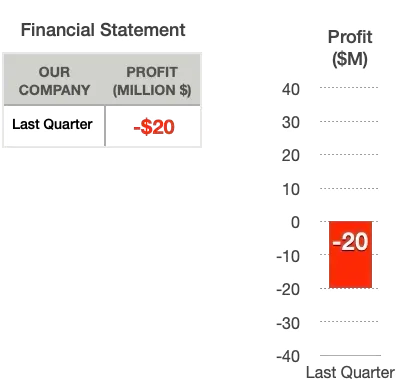 Bad, right? Worried?
Bad, right? Worried?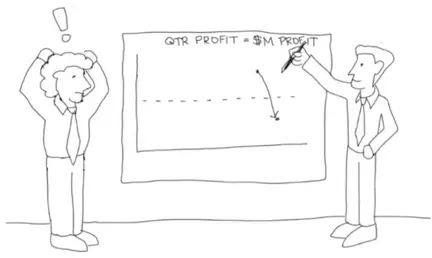
 Now how do you feel?
Now how do you feel?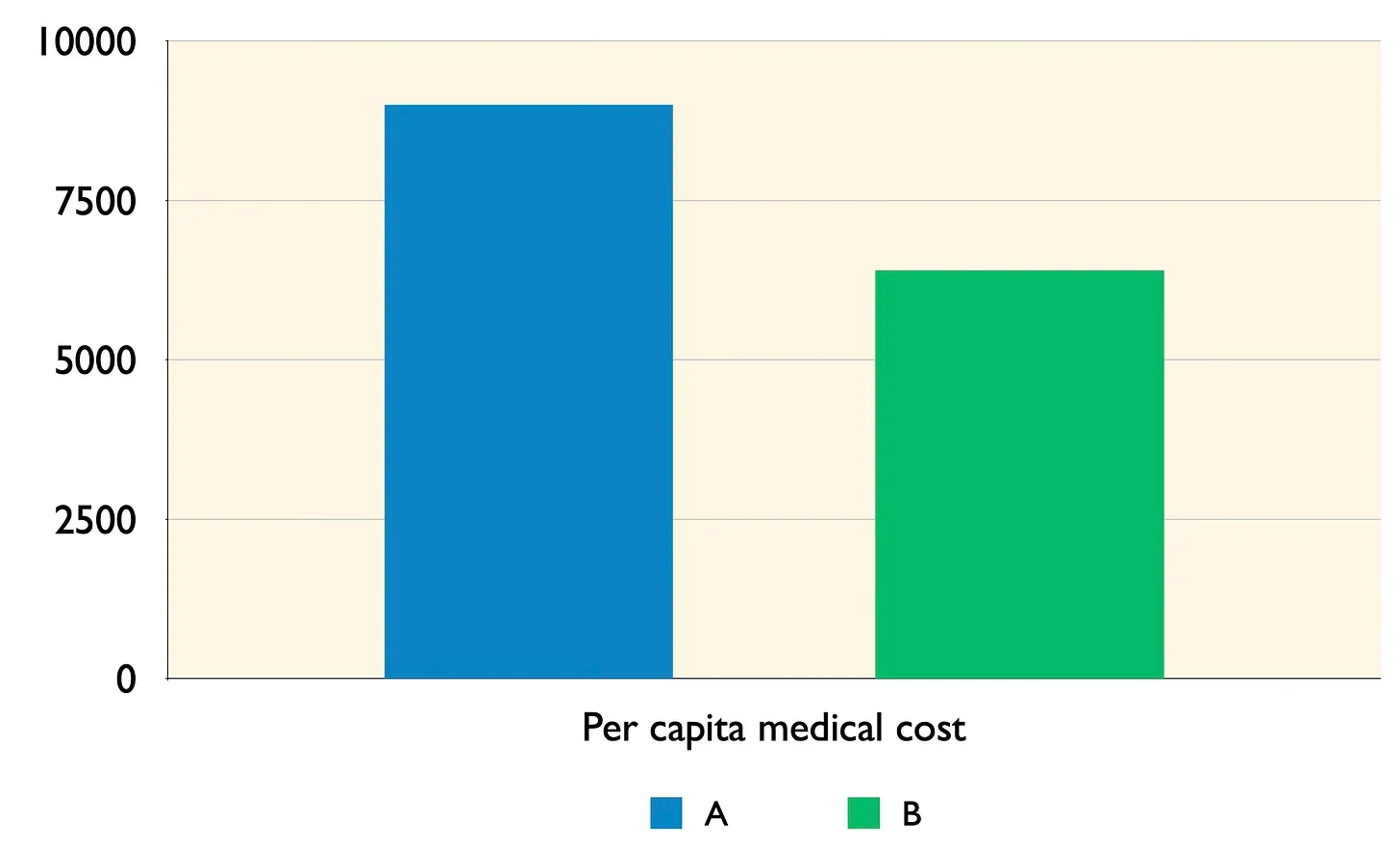


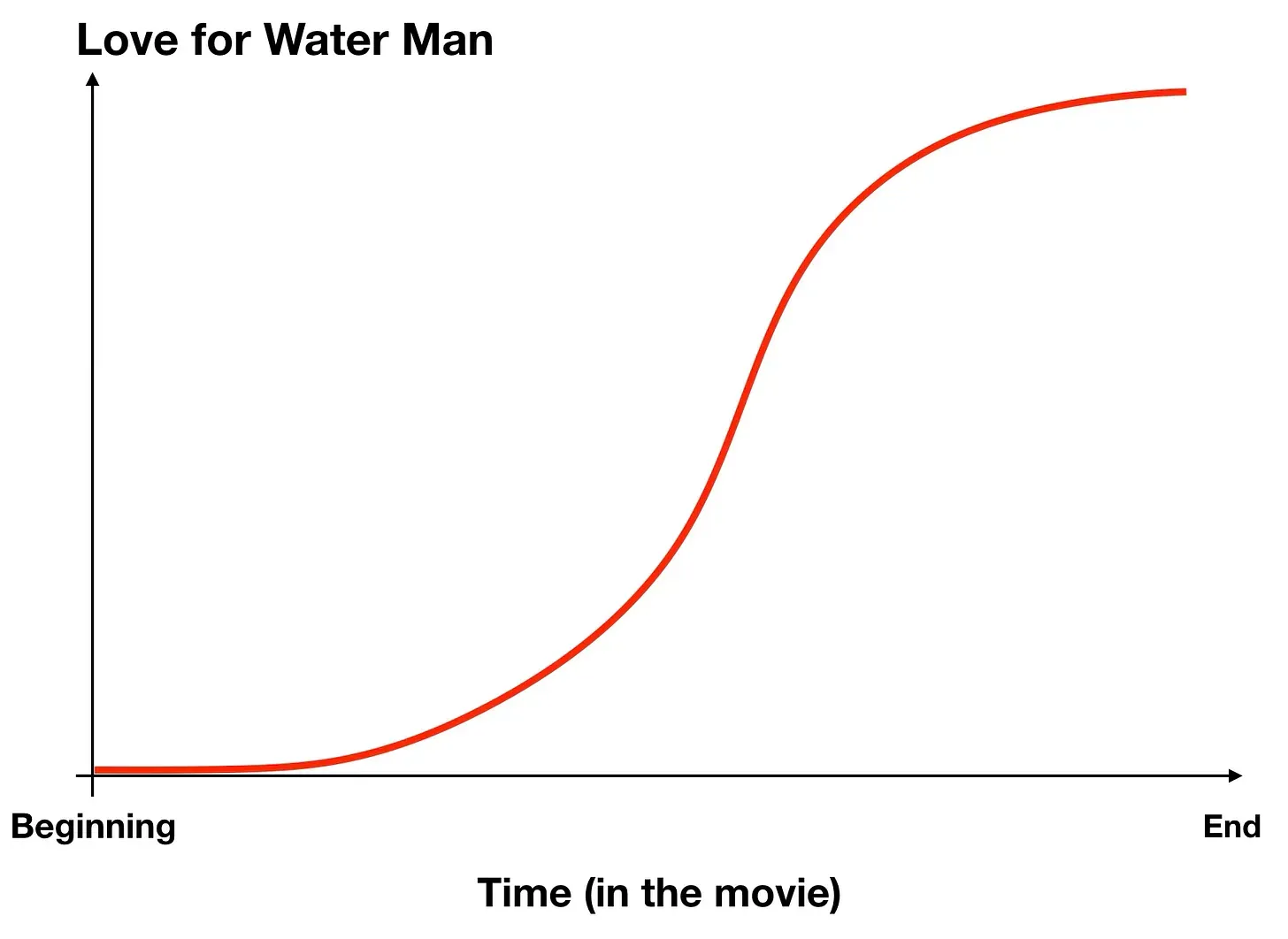

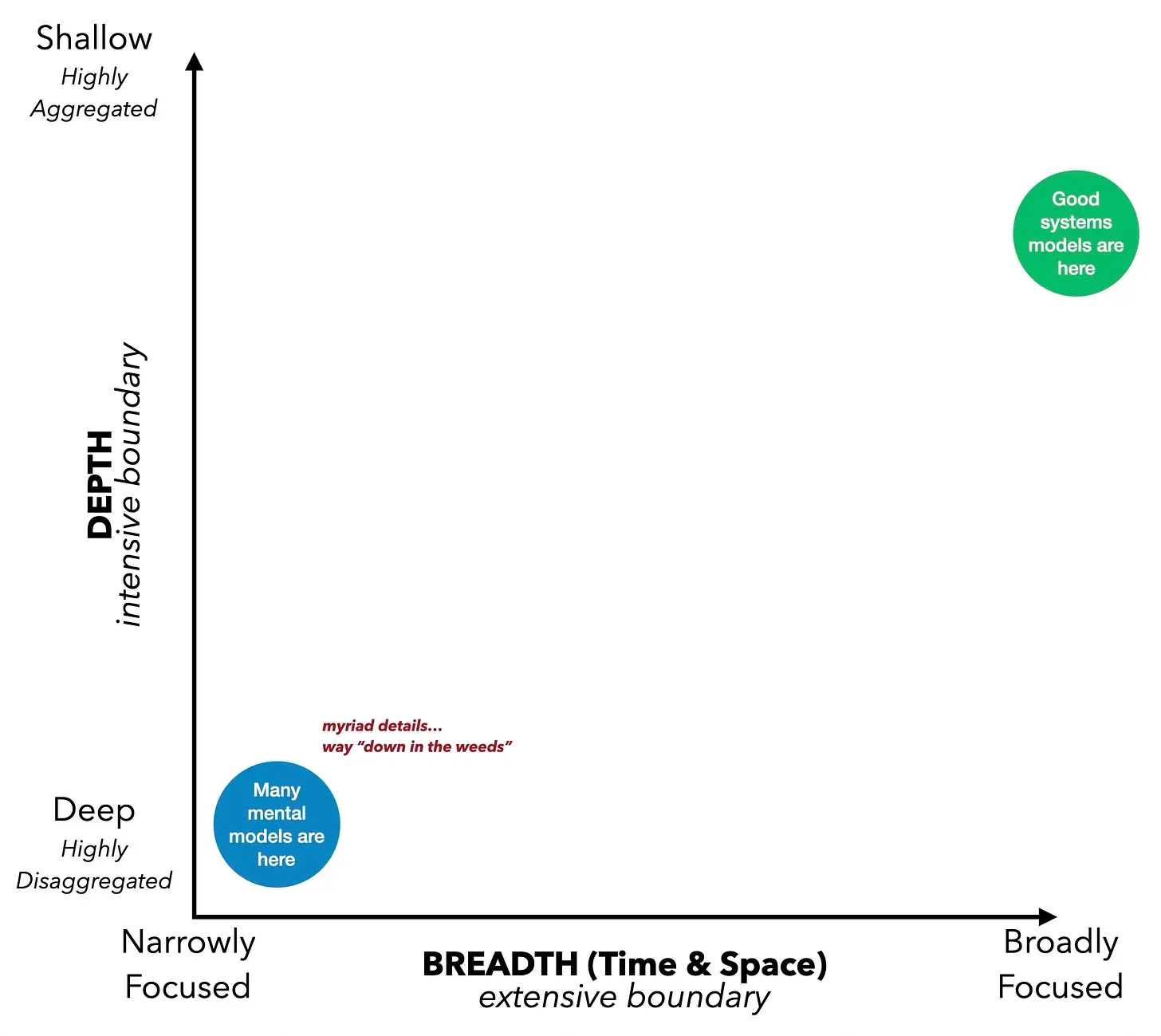
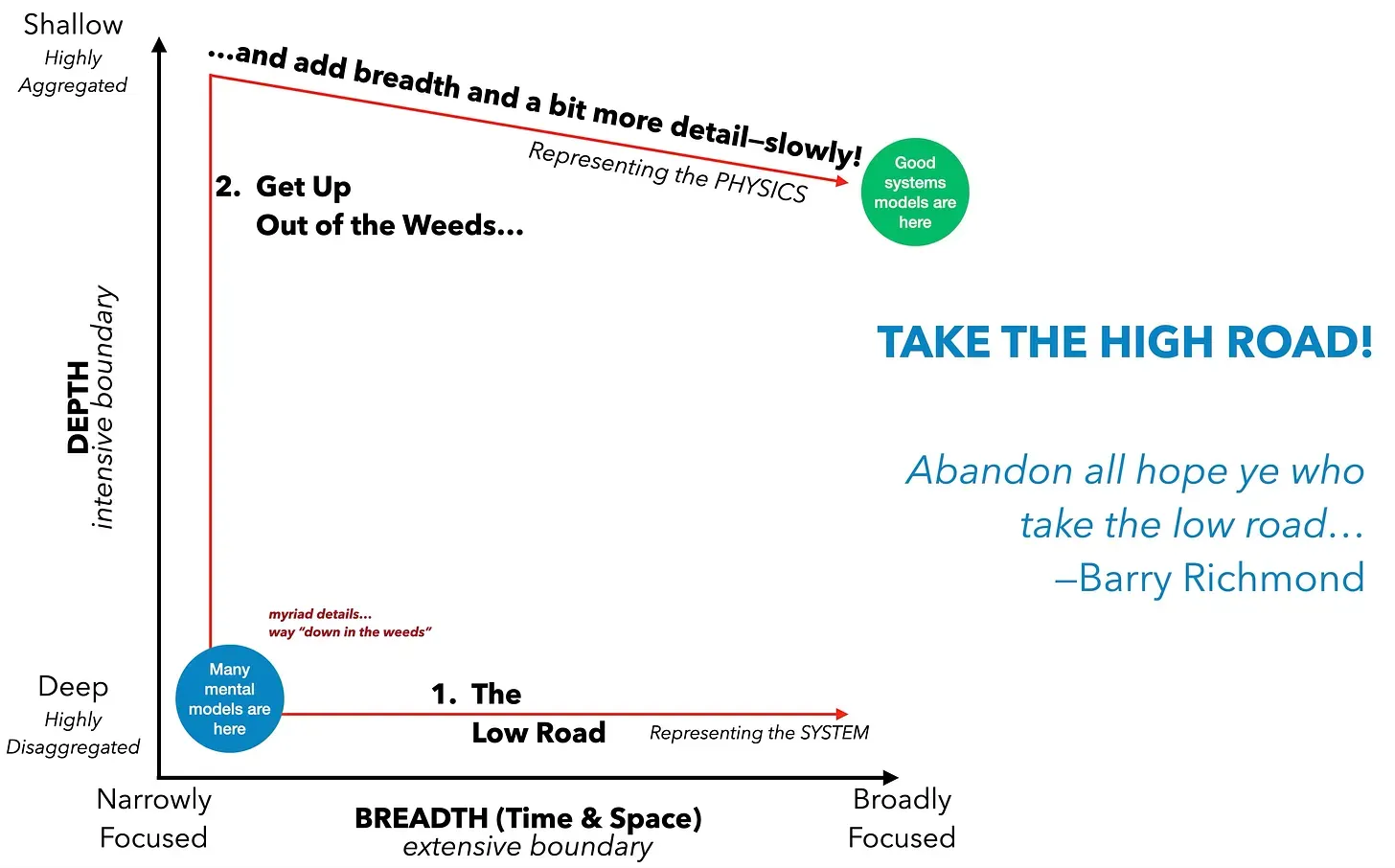 The High Road process involves sharing the initial “starter map” or “starter model” with others. Does it provide a clear explanation of why the performance issue is occurring? What changes or additions are needed? Make small adjustments and share the updated model for testing.
The High Road process involves sharing the initial “starter map” or “starter model” with others. Does it provide a clear explanation of why the performance issue is occurring? What changes or additions are needed? Make small adjustments and share the updated model for testing.
 To truly improve a situation, we need to understand the underlying forces driving the problem. Often, we jump straight into solutions without fully grasping the root cause. A common mistake is assuming we know what’s causing a problem and moving on to the next step.
To truly improve a situation, we need to understand the underlying forces driving the problem. Often, we jump straight into solutions without fully grasping the root cause. A common mistake is assuming we know what’s causing a problem and moving on to the next step.
